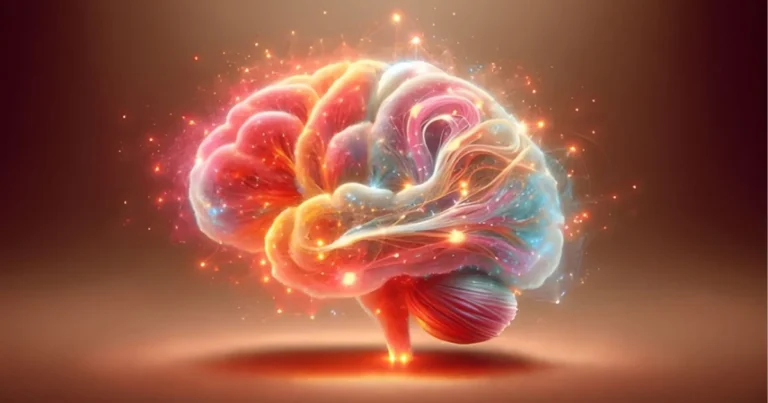Second language, second life: How late bilingualism rewires the aging brain
Can learning a foreign language still stimulate the aging brain? Once considered a marginal question in cognitive science, this issue is now taking center stage in the neuroscience of aging. As life expectancy continues to rise, preserving brain function has become a critical concern. Many strategies have been proposed to slow age-related cognitive decline, but they vary widely in how deeply and complexly they engage the brain. Among them, learning a new language holds a unique position: it simultaneously activates several high-level cognitive functions, memory, attention, inhibition, and cognitive flexibility, while also involving emotional and social components. As a result, it recruits a wide range of neural networks that, in older adults, might not only be stimulated but also reorganized.
Unlike traditional brain-training exercises, which often target a single function, language learning requires constant coordination between comprehension, speech production, and cognitive regulation. It thus becomes a natural model of holistic cognitive training. However, beyond its functional appeal, a deeper question remains largely unexplored: what actually happens in the brain of an older adult who begins learning a new language? Can we detect objective changes in brain network organization? And if so, what neurobiological mechanisms drive these changes? These questions go beyond academic curiosity. They have the potential to shape new, accessible, and culturally enriching interventions for supporting healthy cognitive aging.
Lifelong plasticity: What learning a language does to the older brain
We now know that the brain remains malleable throughout life. This capacity, known as neuroplasticity, enables the brain to reorganize its neural connections in response to experience, and it persists well beyond childhood. In older adults, however, neuroplasticity tends to become slower, more localized, and more specific. Still, it remains active, especially when the brain is engaged in complex, multisensory tasks. Learning a foreign language is one such task.
Language acquisition demands the coordination of auditory perception, syntactic processing, short- and long-term memory, motor articulation, attentional control, and often strong motivation and social engagement. It activates a broad network of cortical and subcortical regions, from the temporal and prefrontal cortices to the thalamus, hippocampus, and cerebellum.
For older adults, the benefits of language learning go well beyond linguistic gains. It may serve as a lever to reorganize neural circuits that have become more rigid with age. In a brain already shaped by decades of experience, learning a new language disrupts the status quo, it forces different brain regions to cooperate in new ways, building fresh pathways for familiar cognitive tasks. If measurable, this reconfiguration could shed light on how the aging brain adapts, compensates, and reallocates its resources.
This hypothesis is precisely what Giovanna Bubbico and her team investigated in a 2025 study published in Brain and Behavior. The researchers analyzed the impact of an English language learning program on cerebellar connectivity, a brain region long associated with motor control but now recognized as playing a crucial cognitive role. Their goal was to determine whether late bilingualism could induce measurable changes in brain networks. The cerebellum was a deliberate choice, given its involvement in temporal coordination of cognitive processes, attention regulation, and the automatization of complex sequences, all of which are critical to language learning. The study thus provides a novel perspective on how words, even when learned late in life, can reshape the connections of the aging brain.
🔗 Read also: The Himba and the hidden colors of the world
Experimental evidence from language training
To explore how learning a foreign language might rewire the aging brain, Bubbico’s team conducted an experimental study with 27 older adults, randomly assigned to two groups. The experimental group participated in a 16-week structured English course, designed specifically for seniors. The program included weekly small-group sessions led by a native speaker and covered oral expression, reading comprehension, basic grammar, and cultural content.
The control group received no intervention and continued their usual routines. All participants underwent both pre- and post-program assessments using resting-state functional MRI and a standardized cognitive test battery to identify any neurofunctional and cognitive changes associated with language learning.
The findings revealed a specific reorganization of brain function in those who took part in the language program. Areas of the cerebellum, particularly lobules VI and VIIb, showed strengthened connectivity with frontal regions associated with executive functions. Conversely, Crus I displayed reduced connectivity with visual areas. Notably, these changes involved regions rich in CB1 receptors, known to support neural flexibility and learning. This suggests that the effects of language learning extend beyond superficial cortical circuits, activating deep biological mechanisms that may help preserve brain health.
This phenomenon aligns with a well-documented model in aging neuroscience: the Posterior-to-Anterior Shift in Aging (PASA). According to this model, as posterior brain regions (responsible for sensory and perceptual tasks) become less efficient with age, older brains increasingly rely on frontal areas associated with planning, reasoning, and self-regulation. Learning a new language appears to accelerate or enhance this natural reorganization by shifting brain activity toward more central, strategic, and cognitively demanding networks.
In other words, the brain does not merely resist aging, it adapts, reorganizes, and remains responsive to complex and novel challenges. Acquiring a new language later in life is therefore more than just learning vocabulary, it activates deep neural circuits, preserves cognitive flexibility, and strengthens adaptive capacity. This directly challenges the notion that it is ever “too late” to change.
🔗 Explore further: Does learning a new language push the old ones aside?
Why language learning is a workout for the whole brain
A complementary study by researchers at the University of Zurich further supports these findings, highlighting the reorganization of brain networks in older language learners. This time, the focus was on resting-state functional connectivity, the spontaneous communication between different brain regions in the absence of a specific task.
The researchers first examined participants’ brain networks before the language course began, then tracked how these networks evolved with learning progress. Remarkably, they observed that some neural changes occurred even before measurable learning gains emerged. In other words, the brain’s initial connectivity patterns, particularly within the Default Mode Network (DMN) and the dorsal executive network, not only reflect the effects of learning, but also predict its success. This points to a feedback loop: the more flexible the brain is to begin with, the more readily it adapts to new stimuli, and the more that stimulation further enhances its learning capacity.
In this light, late bilingualism functions as a true cognitive catalyst, activating and reshaping complex neural circuits. These changes are not confined to traditional language areas but also involve previously overlooked structures like the cerebellum, now understood to play a central role in cognitive functioning.
Learning a language involves much more than passive memorization. It requires continual adaptation: integrating new rules, distinguishing unfamiliar sounds, navigating cultural nuances. This process heavily relies on executive functions such as attention, working memory, and cognitive flexibility, capacities that often decline with age unless actively maintained.
Contrary to the widespread belief in an inevitable cognitive decline, these abilities do not simply fade away. They evolve and can be preserved, or even strengthened, provided they are stimulated regularly and coherently. Reframing language learning as a genuine cognitive intervention offers a promising, motivating, and low-risk strategy to support brain health in aging populations.
🔗 Discover more: When silence speaks: Uncovering the literacy of nonspeaking autistic people
From grammar to gray matter
Together, these studies point to a clear conclusion: learning a new language in later life is far more than a leisure activity or a tool for cognitive maintenance. It engages the brain at a deep level, activating widespread functional networks and mobilizing biological plasticity mechanisms that remain available in older adulthood. This form of stimulation stands out for its complexity: it blends intellectual effort, active memory, sustained attention, social interaction, and ongoing adaptation to novel contexts.
This richness makes late-life language learning an especially effective strategy for enhancing cognitive reserve and slowing the decline of executive functions, among the most vulnerable faculties as we age. By providing robust scientific evidence of the functional, structural, and even neurochemical effects of late bilingualism, these studies offer a renewed understanding of the aging brain. They demonstrate that even in later life, the brain retains its capacity for reorganization, provided the stimulation is consistent, varied, and engaging.
These findings also suggest tangible directions for public health initiatives, where language learning could be promoted as a sustainable, accessible intervention to help mitigate age-related cognitive decline.
In short, learning a new language is not merely a memory exercise. It is an act of cerebral transformation, a targeted activation of long-underestimated networks, and a compelling affirmation, through learning and effort, of the brain’s enduring plasticity. In an age of increasing longevity, language may serve not only as a bridge for communication but also as a powerful driver of neural adaptability, precisely when every form of stimulation matters most.
References
Bilkei-Gorzo, A., Albayram, O., Draffehn, A., Michel, K., Piyanova, A., Oppenheimer, H., … & Zimmer, A. (2017). A chronic low dose of Δ⁹-tetrahydrocannabinol (THC) restores cognitive function in old mice. Nature Medicine, 23(6), 782–787.
Bubbico, G., Tomaiuolo, F., Sestieri, C., Akhlaghipour, G., Granzotto, A., Ferretti, A., … & Delli Pizzi, S. (2025). Learning a foreign language in older adults shapes the functional connectivity of distinct cerebellar sub-regions with cortical areas rich in CB1 receptor expression. Brain and Behavior, 15(5), e70565.
Kliesch, M., Becker, R., & Hervais-Adelman, A. (2022). Global and localized network characteristics of the resting brain predict and adapt to foreign language learning in older adults. Scientific Reports, 12(1), 3633.








